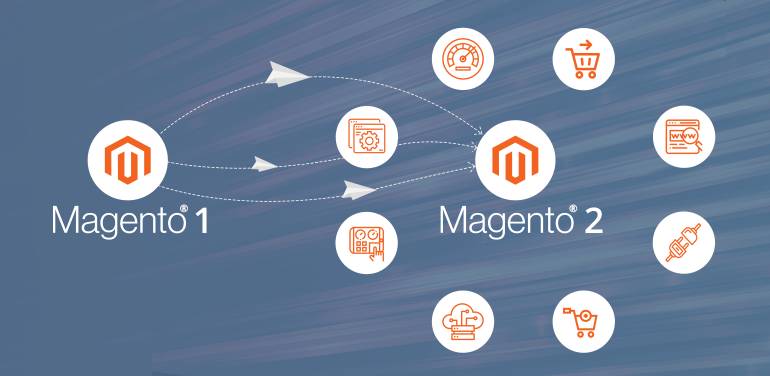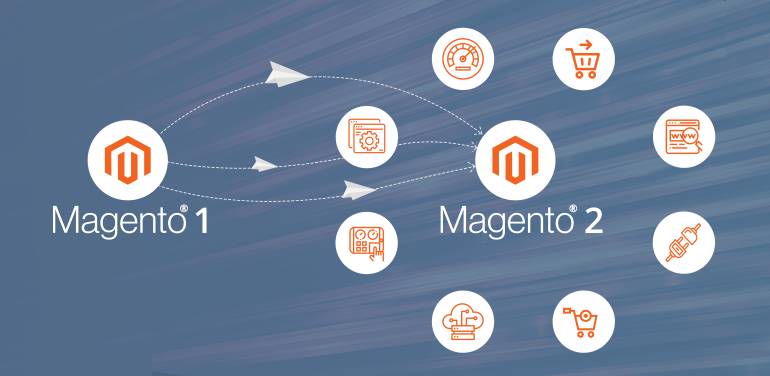Magento 1 to Magento 2 Migration – The Benefits, Reasons, and Process
Out of 209,904 Magento’s live online stores, there are just 56,134 sites that have migrated to Magento 2 (as on 15/11/2019). And the rest of the 153,770 merchants using the Magento Commerce Platform are at risk of running onto an unsupported software starting June 2020.
Magento 1.x is rounding off its support on 30th June 2020, and those who fail to implement Magento 1 to Magento 2 migration won’t receive security updates anymore.
A CMS without support is prone to vulnerabilities. With an increase in the number of web skimming (Magecart) attacks, such web stores will face the risk of getting hacked and infected with code that steals customers’ payment details.
This is the reason that some of the leading eCommerce businesses such as Tile Giant, Pino’s, Land Rover, and many others have already upgraded to Magento 2 because they understood that a simple upgrade could change their fate.
The Benefits of Magento 2 Migration-
The major reason behind the reluctance to upgrade from Magento 1 to Magento 2 is that the key business decision-makers feel that this shift would make no difference. It is like changing adjacently placed seats with no difference in the experience at all. Which is not TRUE!
Because as compared to Magento 1, the new version offers a host of benefits that could make a significant difference in the long run.
Let us have a look at some of the most important benefits of migrating to Magento 2.
1. Improved Performance and Scalability –
There’s no doubt that Magento 2 performs superior to Magento 1 in all cases. It accompanies an improved indexer that helps in increasing its query performance speed. Moreover, Magento 2 uses Varnish Cache, the prominent HTTP accelerator technology which makes it simple to cache requests.
This makes it simple for more than one admin user to create as well as edit eCommerce products’ information without data conflicts in Magento 2. Magento 2 has enhanced performance and scalability because it:
- Improves web pages for faster delivery
- Boosts server response times for all website activities
- Enhances proficiency of backend operations
- Enhances database flexibility and scalability to deal with peak loads
2. Enhanced Security –
Magento 2 has put a considerable focus on security, and subsequently, has more secure information handling. With its main focus on securing user details and offering a secured checkout process, this new version will fulfill every crucial requirement of an advanced eCommerce website development.
Following are the ways you will witness enhanced security by migrating to Magento 2:
- Password: Magento 2 helps to enhance password security by using SHA-256 hashing algorithms within its password management system.
- 2-Factor Authentication: Magento 2 platform offers an incredible 2-Factor Authentication extension, which gives an additional layer of protection.
- Dynamic Backup Plan: To further enhance the security, eCommerce store owners may have a proper backup of Magento files by downloading them with an FTP client. This incorporates having an hourly offsite backup plan and downloadable backups. A backup plan guarantees that the eCommerce store doesn’t get any interference in the service if it gets hacked or crashes.
- Unique Admin URL: The unique admin URL of Magento store offers a strong protection layer by making it harder to approach for the hackers.
- Optimal Development Environment: Magento 2 makes the development procedure quicker and simpler with Magento DevBox Beta, which is another development environment option.
3. Improved Checkout Process –
Magento 2 platform gives a simple and safe checkout to your eCommerce site. It offers an approach to recognize visitors as their guests. This eradicates the login or registration form that is required for users to continue the checkout process.
Also, it offers an active shipping rate as per country, region, or postal code. In Magento 2, you can easily integrate the convenient payment method into the checkout procedure.
There are several payment options available that include Paypal and Braintree. You can make your own particular favored payment modules with easy integration with any merchant checkout platform.
Magento 2 checkout process comprises the order summary where you can see a summary of your shipping information. These features help reduce the checkout hassle and enhance the customer experience.
It even reduces the checkout time, thereby boosting your website’s conversion rate while reducing cart abandonment.
4. Advanced Reporting –
When it comes to succeeding in your eCommerce business, reporting is very crucial. The new advanced reporting features, located in Magento Admin, offer 20 reports through its web interface. This feature gives you insight into three critical areas, such as:
Orders: the number of orders, AOV, and taxes and shipping fees collected
Customers: the number of registered accounts
Products: the number of products orders and which product sells best
The reporting is dynamic and real-time, offering you the metrics that you need for better management of your eCommerce business.
5. Mobile-friendly and Responsive Design –
Magento 2 offers mobile-friendly and responsive designs for delivering the perfect checkout experience to its customers.
The Magento 2 admin panel is touchscreen-friendly and makes it easy to deal with your store via mobile phones or tablets. It makes your site engaging, easy to use, and easy to navigate irrespective of the device in use and its resolutions.
Key Components of Magento 1 to Magento 2 Migration –
Magento 2 upgrade comprises three major components, which include:
1. Data Migration-
By leveraging the Magento 2 Data Migration Tool, an eCommerce platform can securely create a path for moving data to Magento 2 without dropping packets on the way. But remember that data-migration is a time-intensive process. Thus, it’s important to ponder upon all the factors before hiring a Magento Developer. It’s not a simple CSV export from Magento 1 and then import into Magento 2. There are different steps need to be followed that we have discussed below in the blog.
Key Data elements: Product Information, Customer and Order Data, Promotional Data, and Store Configurations
2. Image Migration –
Images and media files, including photos, audio files, and video files, must be moved from the old system to the new setup manually.
3. Extensions –
The Magento community has already validated and updated the major extensions for Magento 2. The good news is that the extensions are readily available on the Magento marketplace.
The following is the list of extensions available in Magento 2:
- Customer Segmentation
- Abandoned Cart Email
- SEO Suite Ultimate
4. Themes & Customizations –
Newer and innovative technologies are designed to give eCommerce merchants the ability to personalize the shopping experience and deliver performance in turn. To achieve that level of optimization, changes to themes and customizations are required. The following is the list of themes available in Magento 2:
- Rope Responsive Theme
- Couture Fashion Responsive Theme
- Minimalism Theme
- Instagram Theme
- Modern Print Store Theme
The Magento 1 to Magento 2 Migration Process
To migrate successfully and avoid issues, it is vital that you thoroughly plan and test your migration. The following diagram explains the workflow followed for the much-talked-about Magento upgrade. Our Magento Developer can create a custom path to pave the way to a successful migration.











